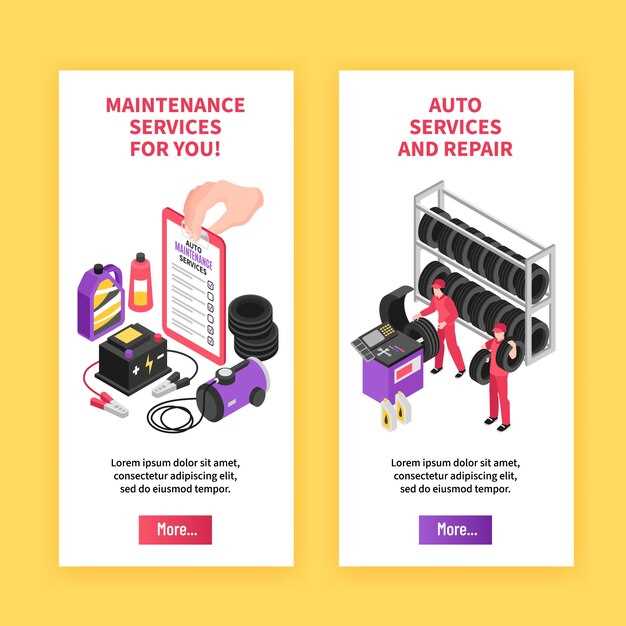
Owning a Toyota vehicle comes with the responsibility of regular maintenance to ensure optimal performance and longevity. Following a scheduled service plan is essential not just for keeping your car in top shape, but also for enhancing safety and reliability on the road.
Understanding the recommended maintenance intervals and services specific to your Toyota model can significantly impact its overall health. This guide provides vehicle owners with a comprehensive overview of what to expect during routine maintenance, helping you make informed decisions about your car’s care.
From oil changes and tire rotations to more complex systems checks, regular service allows you to detect potential issues before they escalate. By adhering to the scheduled maintenance guidelines, you not only preserve the performance of your Toyota, but also contribute to its resale value and your peace of mind.
Understanding the Toyota Maintenance Schedule for Different Models
The Toyota maintenance schedule is designed to ensure the longevity and optimal performance of your vehicle. However, it’s important to note that different models may have varying service requirements based on their engines, technologies, and intended use.
Most Toyota vehicles recommend a routine maintenance check every 5,000 to 10,000 miles. This schedule typically includes oil changes, tire rotations, and inspections of key components such as brakes and fluids. For example, sedans like the Toyota Camry may have maintenance highlighted every 5,000 miles, while SUVs like the RAV4 may have different intervals influenced by increased driving demands.
Additionally, hybrid models such as the Toyota Prius include specific maintenance suggestions related to their unique hybrid systems. These vehicles often benefit from regular inspections of their battery systems, cooling systems, and regenerative braking components, which are not typically found in conventional vehicles.
Owners of trucks like the Toyota Tundra should also pay attention to their maintenance schedule, especially if the vehicle is frequently used for towing or off-road activities. Such applications can place additional stress on the engine and transmission, leading to recommended service intervals being adjusted accordingly.
It’s vital for owners to consult their vehicle’s owner’s manual for the most accurate maintenance schedule tailored to their particular model and year. Utilizing the correct maintenance schedule helps maintain the vehicle’s warranty and enhances safety and reliability over time.
How to Determine When to Service Your Toyota Vehicle

Proper maintenance is essential for the longevity and performance of your Toyota vehicle. Understanding when to schedule service can help ensure that your vehicle runs efficiently and safely. Here are some key indicators to help you determine the appropriate times for maintenance:
- Owner’s Manual Recommendations: Refer to the owner’s manual for the manufacturer’s service schedule. This document provides specific maintenance intervals based on mileage or time.
- Routine Maintenance: Regularly scheduled services typically include oil changes, tire rotations, and brake inspections. These should generally be performed every 5,000 to 7,500 miles.
- Warning Lights: Pay attention to warning lights on the dashboard. If the check engine light illuminates, it is crucial to schedule service immediately.
Additionally, consider the following factors:
- Mileage: Track your mileage to determine when to schedule service based on the intervals suggested in your owner’s manual.
- Time: Even if your vehicle hasn’t reached the mileage threshold, scheduled maintenance is often recommended at least once a year.
- Driving Conditions: If you frequently drive in severe conditions, such as extreme heat, cold, or stop-and-go traffic, more frequent service may be necessary.
- Unusual Sounds or Performance Changes: If you notice any strange noises or changes in your vehicle’s performance, it’s time to have it inspected.
By adhering to these guidelines and monitoring your vehicle’s performance, you can effectively determine when to schedule service for your Toyota. Regular maintenance not only keeps your vehicle in optimal condition but also enhances safety and reliability on the road.
Key Servicing Tasks to Perform at Each Maintenance Interval

Adhering to a maintenance schedule is crucial for keeping your Toyota in optimal condition. Each maintenance interval requires specific tasks that contribute to a vehicle’s longevity and performance. Here are the essential servicing tasks you should perform at various maintenance intervals:
Every 5,000 Miles: During this interval, oil and filter changes are paramount. Regularly changing the engine oil helps maintain proper lubrication, enhancing engine performance. Additionally, inspect and rotate tires to ensure even wear. Check fluid levels, including brake, transmission, and coolant fluids, topping up as necessary.
Every 10,000 Miles: In addition to the tasks performed at 5,000-mile intervals, inspect the brake system for wear, and replace the cabin air filter if necessary. A clean filter ensures better air quality inside the vehicle. It’s also important to examine the battery and clean any corrosion from the terminals.
Every 15,000 Miles: At this stage, it is crucial to inspect the exhaust system for leaks or damage. Replace air filters to maintain optimal engine performance and fuel efficiency. Additionally, check the spark plugs and replace them if they show signs of wear or fouling.
Every 30,000 Miles: As you reach this milestone, it’s time to service the transmission fluid and inspect the drive belts for signs of wear. Flush the cooling system and replace the coolant to prevent overheating and corrosion. Moreover, inspect the brake pads and rotors, ensuring they meet safety standards.
Every 60,000 Miles: Comprehensive checks become essential. Replace the timing belt if applicable to your model, as its failure can lead to severe engine damage. Inspect the fuel system for clogs or leaks and replace fuel filters. Additionally, check the suspension components to ensure they are functioning correctly.
Adhering to this service schedule not only optimizes your vehicle’s performance but also enhances safety and reliability on the road. Regular maintenance ensures that your Toyota remains a dependable mode of transportation for years to come.
